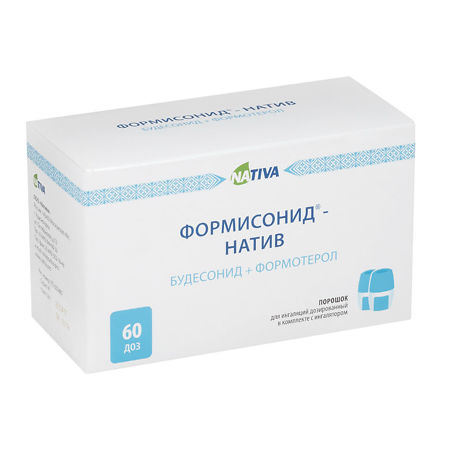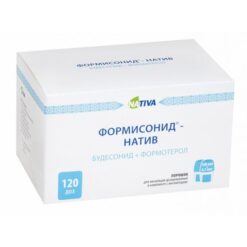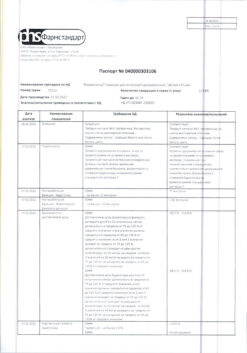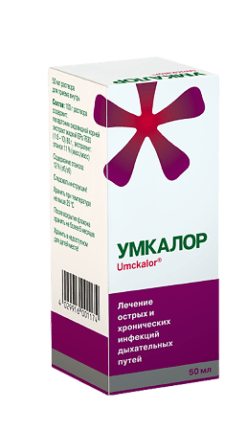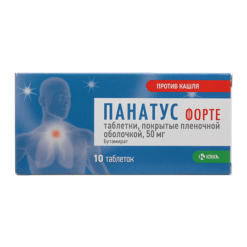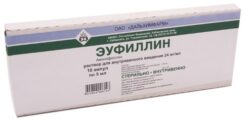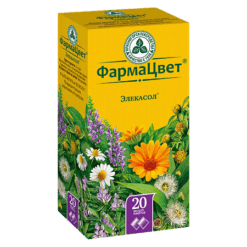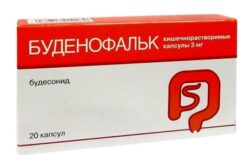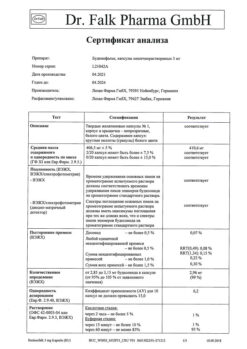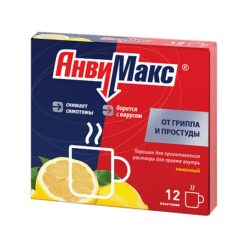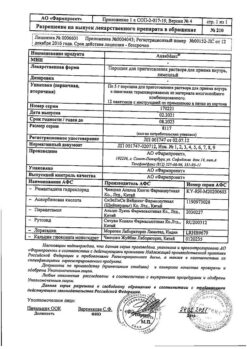No products in the cart.
Formisonide-Native 80 mcg + 4.5 mcg/dose, 60 pcs.
€1.00
Out of stock
(E-mail when Stock is available)
Description Formisonide-antibody is a combination drug containing formoterol and budesonide, which have different mechanisms of action and show additive effect with respect to the severity of bronchial asthma (BA) symptoms, improving lung function and reducing the frequency of exacerbations of bronchial asthma and chronic obstructive pulmonary disease (COPD). Pharmacokinetics:
The special properties of budesonide and formoterol make it possible to use their combination in the treatment of bronchial asthma simultaneously as maintenance therapy and for the relief of attacks, or as maintenance therapy.
Budesonide is a glucocorticosteroid (GCS) that has a rapid (within hours) and dose-dependent anti-inflammatory effect on the airways after inhalation in recommended doses, reducing the severity of symptoms and the frequency of exacerbations of bronchial asthma. When prescribing inhaled budesonide, there is a lower incidence of serious adverse effects than when using systemic GCS. Budesonide reduces the severity of bronchial mucosal edema, mucus production, sputum formation and airway hyperresponsiveness. The exact mechanism of GCS anti-inflammatory action is unknown.
Formoterol is a selective β2-adrenomimetic (selective β2-adrenoreceptor agonist) that causes rapid and prolonged relaxation of bronchial smooth muscle in patients with reversible airway obstruction.
The bronchodilator effect is dose-dependent, occurs within 1-3 minutes after inhalation and persists for at least 12 hours after a single dose.
The effect of Formisonide®-antibody on lung function is similar to that of the combination of budesonide and formoterol monotherapies and greater than that of budesonide alone.
Pharmacokinetic parameters for the respective substances are comparable after administration of budesonide and formoterol as monotherapy and as part of a combination. For budesonide, when administered as part of a combination drug, the area under the concentration-time curve (AUC) is slightly greater, the drug is absorbed faster and the value of maximum plasma concentration is higher.
For formoterol when administered as part of a combination drug, the maximum plasma concentration is the same as that of the monotherapy.
32-44% of the ingested dose of inhaled budesonide is deposited in the lungs, where it is rapidly absorbed and reaches maximum concentration (Cmax) in 20-30 minutes. Systemic bioavailability is approximately 39-49% of the delivered dose. The cumulation index for budesonide (when taken in 2 inhalations twice a day) is 1.32.
After oral administration of budesonide, peak Cmax in plasma is noted 1-2 hours later. Absolute systemic bioavailability is 6-13% of the inhaled dose.
28-49% of the inhaled dose of formoterol is deposited in the lungs, where it is rapidly absorbed and reaches maximum concentration 5-10 minutes after inhalation. Systemic bioavailability is about 61% of the delivered dose. The cumulation index for formoterol (when taken by 2 inhalations twice a day) is 1.77.
Distribution
Budesonide almost does not bind to corticosteroid-binding globulin. Binding to plasma proteins is constant for budesonide in the concentration range (1-100 nmol/L) for both recommended and exceeded doses and is approximately 90%.
The volume of distribution of budesonide is approximately 3 L/kg.
Budesonide penetrates into breast milk.
Formoterol: over the entire concentration range of 10-500 nmol/L, plasma protein binding for the RR and SS enantiomers of formoterol is 46% and 58%, respectively, with an average of 50%.
The volume of distribution is formoterol – 4 l/kg.
Metabolism
Budesonide undergoes intensive biotransformation (about 90%) during “first passage” through the liver to form metabolites with low glucocorticosteroid activity. Budesonide is metabolized mainly with participation of CYP3A4 isoenzyme. Glucocorticosteroid activity of the main metabolites – 6-β-hydroxybudesonide and 16-α-hydroxyprednisolone – does not exceed 1% of similar activity of budesonide.
Formoterol is metabolized mainly in the liver with participation of CYP2D6 and CYP2C enzymes by conjugation to form active O-demethylated metabolites, mainly inactivated conjugates. Secondary metabolism involves molecular degradation and sulfate conjugation.
There is no evidence of metabolite interactions or substitution reactions between budesonide and formoterol.
Elimination
Budesonide is excreted in the urine and feces in the form of conjugates and only in small amounts unchanged. Budesonide has a high systemic clearance (approximately 1.2 l/min). Half-life (T1/2) of budesonide is 2 to 3.6 hours.
Formoterol: After inhalation, 8-13% of the delivered dose of formoterol is excreted unchanged in the urine (62%) and feces (24%). Formoterol has a high systemic clearance (approximately 1.4 L/min). The elimination half-life (T1/2) is on average 17 hours.
Pharmacokinetics in special clinical cases
The pharmacokinetics of formoterol in patients with renal impairment has not been studied. Plasma concentrations of budesonide and formoterol may increase in patients with liver disease.
.
Indications
Indications
– Bronchial asthma, as maintenance therapy and for relief of attacks (insufficiently controlled using inhaled GCS and short-acting β2-adrenomimetics as therapy on demand, or adequately controlled with inhaled GCS and long-acting β2-adrenomimetics);
– Chronic obstructive pulmonary disease (symptomatic therapy in patients with severe COPD with an ORP1 < 50% of the estimated calculated level and with a history of recurrent exacerbations, in the presence of severe symptoms of the disease despite therapy with long-acting bronchodilators).
Active ingredient
Active ingredient
How to take, the dosage
How to take, the dosage
Selection of the dose of active substances included in the drug Formisonide-nativ is carried out individually and depending on the severity of the disease. This has to be taken into account not only when starting treatment with combination drugs, but also when changing the dose of the drug.
Bronchial asthma
Formisonide-Nativ is not indicated for initial treatment of intermittent and mild persistent bronchial asthma.
In the event that individual patients require a different active ingredient dose combination than Formisonide-Nativ, β2-adrenomimetics and/or GCS in separate inhalers should be prescribed separately.
Patients should see their physician regularly to monitor the optimal dose of Formisonide-nativ. The dose should be reduced to the lowest dose that maintains optimal control of bronchial asthma symptoms. After achieving bronchial asthma control with twice-daily dosing, it is recommended that the dose be titrated to the lowest effective dose, up to taking 1 inhalation per day, in those cases where the physician believes the patient requires maintenance therapy in combination with a long-acting bronchodilator. In the next step, if full control is achieved, monotherapy with inhaled glucocorticosteroids may be tried.
There are two approaches to prescribing Formisonide-antibody therapy for bronchial asthma:
A. As maintenance therapy: Formisonide-antibody is indicated for ongoing maintenance therapy in combination with a single short-acting β2-adrenomimetic to control attacks;
B. As maintenance therapy and for seizure control: Formisonide-Nativ is indicated both for ongoing maintenance therapy and on demand when symptoms occur.
As maintenance therapy: prescribed in combination with a single short-acting β2-adrenomimetic for seizure control. The patient needs to have a separate short-acting β2-adrenomimetic inhaler with him at all times to control attacks.
Formisonide-Nativ 80 µg + 4.5 µg and 160 µg + 4.5 µg
The drug is indicated for 1 to 2 inhalations twice daily. If necessary, the dose may be increased to 4 inhalations 2 times a day.
Formisonide-nativ 320 mcg + 9 mcg
The drug is prescribed 1 inhalation 2 times a day. If necessary, the dose may be increased to 2 inhalations 2 times a day.
The increased frequency of use of short-acting 02-adrenomimetics is an indication that overall disease control has worsened and requires revision of antiasthmatic therapy.
As maintenance therapy and for seizure control, the drug is especially indicated for patients with insufficient asthma control and a need for frequent use of medications for seizure control; if there is a history of asthma exacerbations that required medical intervention. The patient must have Formisonide-nativ on hand at all times to control attacks.
The occurrence of dose-dependent side effects in patients using large numbers of inhalations for seizure management must be monitored closely.
Formisonide-nativ 80 µg + 4.5 µg and 160 µg + 4.5 µg
The recommended dose is 2 inhalations daily: 1 inhalation in the morning and evening, or 2 inhalations once daily in the morning only or evening only. Some patients may be prescribed a maintenance dose of Formisonide-nativ 160 mcg + 4.5 mcg 2 inhalations 2 times a day. If symptoms of bronchial asthma occur, 1 additional inhalation should be prescribed. If symptoms increase further within a few minutes, 1 additional inhalation is prescribed, but not more than 6 inhalations to stop 1 attack.
It is not usually necessary to prescribe more than 8 inhalations per day, but the number of inhalations may be increased to 12 per day for short periods of time. In patients who use more than 8 inhalations per day, a review of therapy is recommended.
Cronic obstructive pulmonary disease
Formisonide-nativ 160 mcg + 4.5 mcg
Recommended dose: 2 inhalations 2 times daily.
Formisonide-nativ 320 mcg + 9 mcg
Recommended dose: 1 inhalation 2 times a day.
Patient special groups
There are no data on the use of Formisonide-nativ in patients with hepatic impairment.
There is no need for special selection of the drug dose for elderly patients.
Interaction
Interaction
In concomitant administration of ketoconazole in a dose of 200 mg once daily and budesonide in a dose of 3 mg, the concentration of budesonide in plasma is increased by an average of 6 times. When taking ketoconazole 12 hours after budesonide administration, the concentration of the latter in plasma increases on average by 3 times. There is no information about similar interaction with budesonide when administered by inhalation, but a marked increase in plasma concentrations of budesonide should be expected.
Formisonide®-nativ should not be administered concomitantly with β-adrenoblockers (including eye drops) because they may attenuate or inhibit the effects of formoterol except in forced cases.
The concomitant use of Formisonide®-nativ and quinidine, disopyramide, procainamide, phenothiazines, antihistamines (terfenadine), monoamine oxidase inhibitors (MAOIs) and tricyclic antidepressants may prolong QTC interval and increase the risk of ventricular arrhythmias.
When anesthesia is performed with preparations of halogenated hydrocarbons against the background of using Formisonide®-nativ, there is an increased risk of arrhythmias in patients.
The concomitant administration of Formisonide®-nativ and other β-adrenomimetic agonists may increase formoterol side effects.
The hypokalemic effect of β2-adrenomimetics may be enhanced with concomitant administration of xanthine derivatives, mineral GCS derivatives and diuretics. Hypokalemia increases the predisposition to develop arrhythmias in patients taking cardiac glycosides.
Methandienone, estrogens enhance the effects of budesonide.
No interactions of budesonide with other medications used to treat bronchial asthma have been noted.
Special Instructions
Special Instructions
It is recommended that the dose of the drug be reduced gradually before discontinuing treatment and abrupt withdrawal of treatment is not recommended.
The doses of 80 + 4.5 mcg/dose and 320 + 9 mcg/dose are not intended to treat patients with severe bronchial asthma.
Formisonide®-nativ is not indicated for initial therapy selection in the initial stages of treatment of bronchial asthma and COPD.
If therapy is not effective enough or the maximum recommended doses of Formisonide®-nativ are exceeded, the treatment regimen should be reconsidered.
An increase in the frequency of administration of bronchodilators as an emergency medication indicates a worsening of the course of the underlying disease and is reason to reconsider treatment tactics for bronchial asthma.
An unexpected and progressive worsening of bronchial asthma or COPD symptom control is a potentially life-threatening condition and requires urgent medical intervention. In this situation, consider increasing the dose of GCS, i.e. starting a course of oral GCS or antibiotic treatment if there is an infection.
Patients should always carry emergency medication: Formisonide®-antive (for patients with bronchial asthma using Formisonide®-antive for maintenance therapy and for attack control) or short-acting β2-adrenomimetics (for patients using Formisonide®-antive only for maintenance therapy).
The need for regular maintenance doses of Formisonide®-nativ should be explained to the patient according to the therapy chosen, even when there are no symptoms of the disease.
Inhaled Formisonide®-nativ (80 + 4.5 mcg/dose and 160 + 4.5 mcg/dose) to control attacks should only be given when symptoms occur, but it is not indicated for regular prophylactic use, i.e. before exercise. In such cases, use of a separate short-acting β2-adrenomimetic is indicated.
If the symptoms of bronchial asthma can be controlled, the dose of Formisonide®-nativ can be gradually reduced, and it is important to monitor the patients’ condition continuously. The lowest effective dose should be prescribed (see section “Dosage and administration”).
The treatment with Formisonide®-nativ should not be started during an exacerbation of bronchial asthma.
As with the use of any other inhaled drug, paradoxical bronchospasm with immediate increase in rales after a dose of Formisonide®-nativ may occur. In this case Formisonide®-nativ should be discontinued, the therapy should be reconsidered and, if necessary, alternative therapy should be prescribed.
The systemic effects of any inhaled GCS, especially if high doses are taken over a long period of time, may occur. Systemic effects are less likely to occur with inhaled therapy than with oral GCS. Possible systemic effects include adrenal suppression, decreased bone mineral density, cataracts and glaucoma.
Because of the potential effect of inhaled GCS on bone mineral density special attention should be given to patients taking high doses over a long period of time with risk factors for osteoporosis. Studies of long-term use of inhaled budesonide in adults at a daily dose of 800 micrograms (measured dose) showed no significant effect on bone mineral density. There are no data regarding the effect of higher doses of the drug on bone mineral density.
If there is reason to believe that adrenal function has been impaired on prior systemic GCS therapy, precautions should be taken when transferring patients to Formisonide®-nativ.
Inhaled therapy with budesonide generally minimizes the need for oral GCS, but patients who discontinue oral GCS therapy may have long-term adrenal insufficiency. Patients who in the past have needed urgent high-dose GCS or have received long-term high-dose inhalation GCS treatment may also be at this risk. It should be remembered about the possibility of residual adrenal dysfunction in such patients in extreme cases and any situations that may cause stress (including surgical interventions). Adequate GCS treatment should be provided in such situations. Depending on the degree of adrenal dysfunction, a specialist may need to be consulted prior to the recommended procedures.
The development of candidal infection of the oral cavity is possible. To reduce the risk, patients are advised to rinse their mouth thoroughly with water after each inhalation of the drug. If oral candidiasis infection develops, local antifungal therapy may be performed without discontinuing treatment with Formisonide®-nativ.
Particular precautions should be observed in patients with unstable bronchial asthma who use short-acting β2-adrenomimetics to relieve attacks during exacerbations of severe bronchial asthma, since the risk of hypokalemia increases with hypoxia and other conditions when there is an increased chance of developing hypokalemic symptoms. In such cases it is recommended to control potassium content in blood serum.
The blood glucose concentration in diabetic patients should be monitored during treatment.
The use of formoterol in a dose greater than 54 mcg/day (over 12 inhalations of Formisonide®-nativ in doses of 80+4.5 mcg or 160+4.5 mcg or over 6 inhalations of 320+9 mcg) may lead to positive doping tests.
Particulars of action of the drug when discontinuing
Because of the risk of exacerbations, abrupt withdrawal of Formisonide®-Nativ should be avoided, the dose of the drug should be reduced gradually under medical supervision.
In case of adverse reactions such as tremors or muscle cramps, during the use of Formisonide®-nativ, it is recommended to refrain from driving vehicles and operating machinery as well as from other potentially dangerous activities requiring increased concentration and rapid psychomotor reaction.
Contraindications
Contraindications
Hypersensitivity to budesonide, formoterol or any other excipient of the drug;
– galactose intolerance, lactase deficiency or glucose-galactose malabsorption;
– Age
Side effects
Side effects
There has been no increase in the incidence of adverse reactions when budesonide and formoterol have been coadministered.
The undesired reactions were distributed according to the frequency of occurrence. The following criteria were used to assess frequency: very common (>1/10), common (1/100 to 1/10), infrequent (1/1000 to 1/100), rare (1/10000 to 1/1000), very rare (<1/10000), (including individual reports).
Infectious and parasitic diseases: often – rhinopharyngitis, nasal congestion, sinusitis, upper respiratory tract infections, bronchitis, oropharyngeal candidiasis (candidiasis of the oral mucosa and larynx).
Immune system disorders: rarely – anaphylactic reactions, including angioedema (Quincke’s edema); bronchospasm, including paradoxical.
Endocrine system disorders: rare – hypokalemia; very rare – hyperglycemia, symptoms of systemic glucocorticosteroid effects (including hypocorticism, hypercorticism.
Mental disorders: infrequent – psychomotor agitation, restlessness, anxiety, dizziness, sleep disorders; very rare – depression, behavior disorders, aggressive behavior, nervousness, taste disorders.
Central nervous system disorders: often – headache.
Visual system disorders: very rarely – cataracts, glaucoma (with prolonged use of high doses), increased intraocular pressure.
Cardiac disorders: often – palpitations, infrequent – tachycardia, rarely – arrhythmias, including atrial fibrillation, supraventricular tachycardia, extrasystole; very rarely – angina pectoris, atrial and ventricular tachyarrhythmia.
Vascular disorders: very rare – changes in blood pressure (arterial hypotension, arterial hypertension).
Respiratory system, chest and mediastinum disorders: frequently – irritation in the throat, cough, hoarseness of voice; rarely – dysphonia, (disappearing after discontinuation of therapy or reduction of the drug dose).
Gastrointestinal disorders: frequent – discomfort in the stomach, rare – vomiting, very rare – nausea, dysphagia (impaired swallowing).
Skin and subcutaneous tissue disorders: infrequent – bruising, rare – urticaria, itching, dermatitis, rash, very rare – redness of the skin.
Muscular and connective tissue disorders: common – tremor, infrequent – muscle cramps, rare – osteoporosis (decreased bone mineral density), back pain.
The systemic effects of inhaled GKS may be observed when taking the drug in high doses for a long time.
The use of β2-adrenomimetics may increase blood levels of insulin, free fatty acids, glycerol, and ketone derivatives.
If any of the side effects listed in the instructions worsen, or if you notice any other manifestations not listed in the instructions, tell your doctor.
Overdose
Overdose
Symptoms: no clinically significant symptoms are expected in acute overdose of budesonide, a component of Formisonide®-Nativ. If budesonide is taken chronically in excessive doses, systemic GCS effects may occur.
In case of formoterol overdose, tremor, nervousness, insomnia, headache, dizziness, palpitations, tachycardia, angina pectoris, blood pressure changes, metabolic acidosis, in some cases, hyperglycemia, hypokalemia, prolongation of QTC interval, arrhythmias, nausea, increased nervous excitability, muscle spasms may be observed.
Treatment: Supportive and symptomatic treatment is indicated.
Similarities
Similarities
Additional information
| Shelf life | 2 years. Do not use after the expiration date printed on the package. |
|---|---|
| Conditions of storage | In the dark place at a temperature not exceeding 25°C. Store out of the reach of children. |
| Manufacturer | Nativa, Russia |
| Medication form | Powder for preparation of solution for inhalation |
| Brand | Nativa |
Other forms…
Related products
Buy Formisonide-Native 80 mcg + 4.5 mcg/dose, 60 pcs. with delivery to USA, UK, Europe and over 120 other countries.

